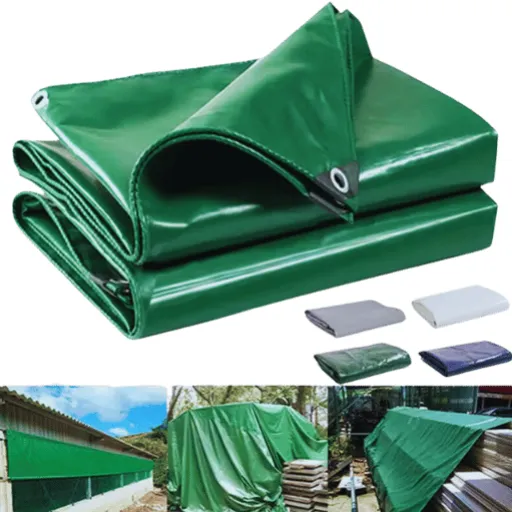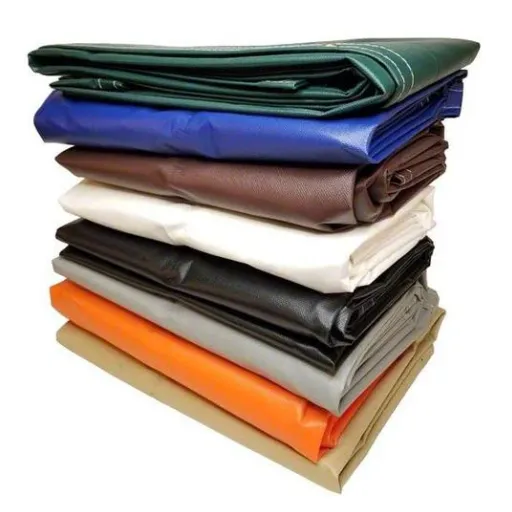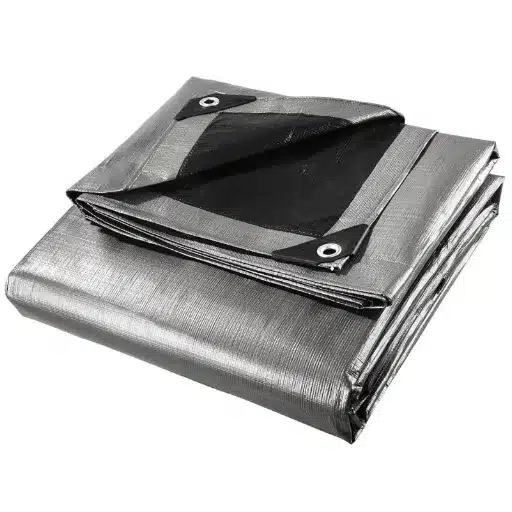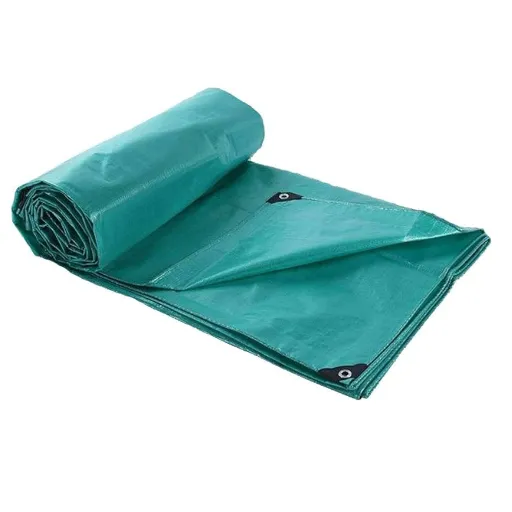Proper maintenance, such as cleaning every now and then with mild detergent and waterproofing solutions, along with storing in a cool dry place, is crucial to avoid mildew or degradation. Alongside this, industries and individuals also benefit from this environmentally friendly option: canvas being biodegradable and treated with mostly non-toxic solutions. Thus, canvas tarps backed by proper maintenance offer a giant step toward providing a strong, long-term resolution for protective and covering needs.
Waterproof Canvas Tarps
Being waterproof canvas tarps, they are basically, well, a whole array of very common terms that indicate durable, water-resistant canvas tarps, wanted for an array of purposes in many industries. According to data from Search Trends, queries about uses, upkeep, and lifespan abound. Their highly rugged construction allows the tarps to hold up during long exposure to moisture, preventing leaks, thus ensuring trustworthy protection of goods and surfaces under all weather circumstances.
Key Benefits
Also, because they remain breathable and resistant to tearing, they find common application in agriculture, construction, and logistics. With sufficient care and treatment, their working lives can be extended considerably, solidifying their standing as a more cost-effective alternative to synthetic ones.
Assessing Waterproof Capabilities
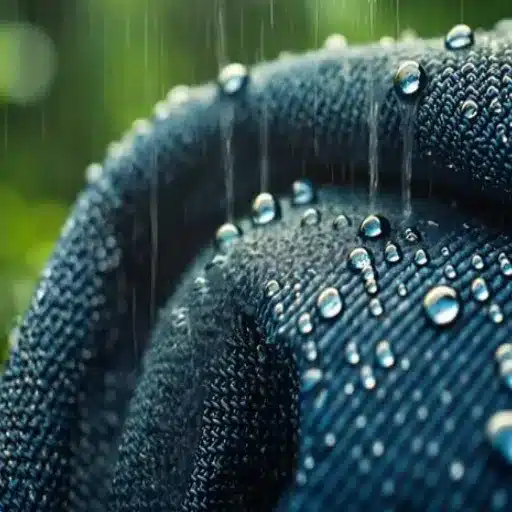
Materials in Waterproof Tarps
Waterproof tarps have been made with different materials that promise durability and water resistance to uphold certain standards for different environmental conditions. Common materials include polyethylene, vinyl, or canvas with waterproofing coatings.
Polyethylene Tarps
Polyethylene tarps are constructed from a woven high-density polyethylene (HDPE) core laminated with low-density polyethylene (LDPE) to give maximum water penetration resistance while being lightweight and affordable.
Vinyl Tarps
Vinyl tarps are manufactured out of polyvinyl chloride (PVC) and provide an excellent defense not just against water but also against UV rays, chemicals, and mildew, making them most suitable for harsher industrial or marine applications.
Canvas Tarps
Canvas tarps are generally cotton or polyester and treated with some compound, such as wax or silicone, that repels water. Being breathable yet strong, these tarps are commonly used for protecting machinery and crops.
Further advancements in production technology have given these materials better performance properties with reinforced seams or laminations that practically prevent water ingress even after long-term exposure to harsh conditions. Depending upon the particular application involved, which determines the duration of exposure to harsh conditions, the kind of environmental stresses, and desired longevity should be considered before deciding on the material to the optimally enhance performance and investment returns.
Mil Thickness and Its Importance
The mil thickness, a measurement standard in thousands of an inch (0.001”), has a great bearing in ensuring a material protective effect in terms of durability, strength, and performance. From physical damage-related wear to wet days or hot days, all contribute to the make of the thicker material acting as a barrier to some kind of influence.
Is Tarp Waterproof? Understanding Waterproof and Water-Resistant Tarps
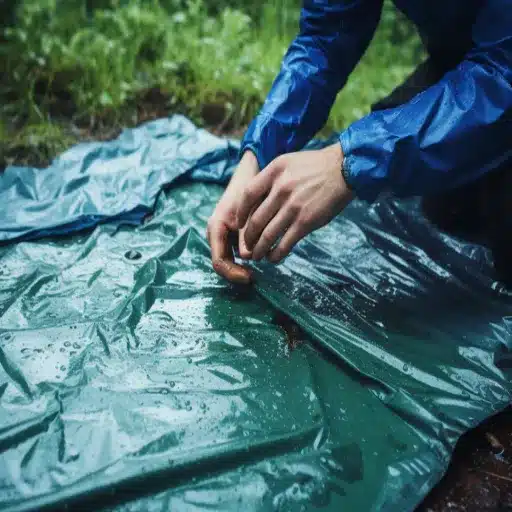
In an outdoor covering or protection scheme, tarps are a must-have item for different industries and personal uses. Are tarpaulins really waterproof or just water-resistant? It is easy to mix these two characteristics, so one will surely need to know the difference between the two in order to end up with the right tarp that will match the purpose of shielding equipment from heavy downpours, protecting campgrounds, or even topping valuable assets from shifting weather. This article will really treat waterproof versus water-resistant tarps: Looking deep into material composition, environmental considerations, and applied uses. We hope that in the end, you have reached a conclusion on which tarp best suits your needs.
Introduction to Tarps and Their Uses
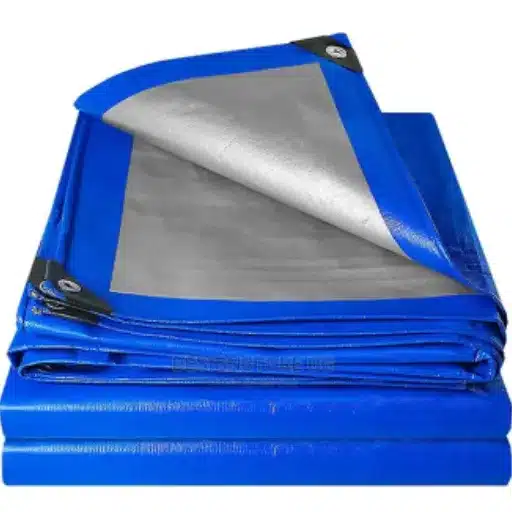
Definition of a Tarp
A tarp, or tarpaulin, is a soft-sheet waterproof or water-resistant sheet. It may be made of polyethylene, canvas, vinyl, or otherwise. Tarps serve to offer protective shield from rain, sunlight, and other environmental factors such as wind or dust. Modern tarps usually feature grommets along their edges so that they can be tied down with ropes or tie-downs to keep the tarp firmly in place during various uses.
Material Varieties
There exists a variety of tarps in the market, depending on their use-general applications, including heavy-duty industrial tarps, lightweight camping tarps, or even varieties that can resist UV rays for extended sun exposure periods. This flexibility allows tarps to fulfill a huge range of roles in industries from construction to farming, outdoor recreation, and logistics, wherein it becomes critical to protect assets and surfaces from environmental stresses.
Common Applications of Tarps
Tarps apply for a wide range of purposes, exploiting their durability, flexibility, and shielding properties to suit their disciplinary demands. The latest data say that common applications of tarps are:
🏗️ Construction
Heavy tarps are used on construction sites to keep materials, scaffolding, or incomplete structures from getting damaged by the weather. Tarps are also used to control debris during demolition or renovation works.
🌾 Agriculture
In agriculture, tarps protect crops, hay, and silage from rain, wind, and UV exposure. Some special breathable tarps trigger air circulation while maintaining protection, thereby reducing their risks of spoilage of semiproducts in storage.
🏕️ Outdoor Recreation
The tarps act as a waterproof shelter or ground sheet in camping and hiking. Being lightweight and compactly designed, they ensure ease of movement and reliable protection from rain or harsh sunlight during an outdoor expedition.
🚛 Logistics and Transport
Tarps find application in securing goods during transport, especially by trucks and trailers. The waterproof and UV-resistant kind protects the cargo from the environment while ensuring the integrity of the goods during transit.
🚨 Emergency and Disaster Relief
The tarps find application in emergency cases for the purpose of erecting temporary shelters, patching up damaged roofs, or covering exposed areas after natural disaster events. They are lightweight yet sturdy, ensuring the fastest set-up in such cases.
The diverse uses here make tarps indispensable in both commercial and individual settings alike. Their ability to resist any adverse weather and shift to numerous tasks speaks to their longevity in the varied industries over time.
Need for Waterproofing
Waterproofing, as the essence of protection, aims to safeguard structures, equipment, and materials from the damaging effects of water intrusion. According to the recent analysis from search trends, the interest in various waterproofing methods is growing in industries with a highlight on residential construction and infrastructure development. This growing interest is an aftermath of increasing instances of extreme weather patterns, featuring heavy rains and floods, that threaten buildings and other assets.
Critical Protection Benefits
Waterproofing prevents water intrusion that causes structural weakening, mold growth, or compromised insulation efficiency, whose negative implications warrant costly repairs and risks to safety. Usually, members consider liquid-applied membranes, waterproof sealants, and high-performance tarps suitable for waterproofing due to their durability and adaptability to different surfaces. Together with good application methods, they provide a long-term guarantee, hence rendering waterproofing not only as one against risk but also being strategized as a worthy investment in resilience.
Understanding Waterproof vs. Water-Resistant
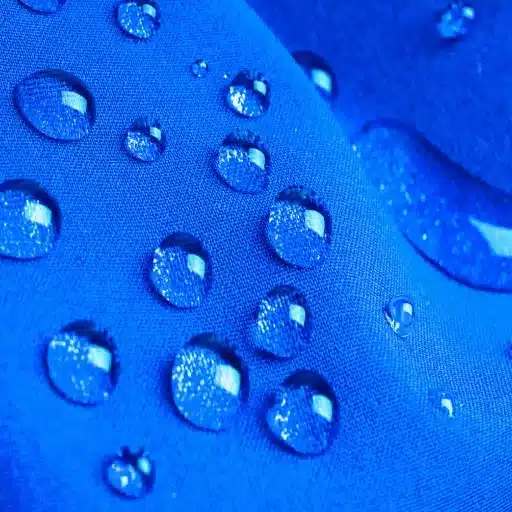
Definitions and Key Differences
Waterproofing and water resistance are two words often used interchangeably but really represent distinct technical concepts that relate to their practical application. A waterproof material prevents water from penetrating at all, even when subjected to prolonged exposure or submersion. Engineering techniques for these purposes include sealed seams, impermeable coatings, and multi-layered construction that prevents any ingress of moisture.
Water-resistant materials, however, have some degree of pitch against water penetration but may allow fine penetration either with prolonged exposure or when sufficient pressure is applied. Thus, water-resistant products mostly depend on surface treatment such as DWR (Durable Water Repellent) that causes water to form droplets and roll off the fabric before it is absorbed. The latest search engine data show increased interest in defining the difference in performance between the two categories from industries such as apparel, construction, and electronics. The rank of these searches for waterproof vs. water-resistant shows increasing concern about durability, application context, and cost efficiency. Consumers want to understand these terms so they can make informed decisions regarding waterproofing whether it is for a smartwatch to swim with or evaluating building materials to be used on sites that see a lot of moisture.
How Waterproofing Works
Waterproofing involves applying specialized materials and techniques to form an impermeable barrier suitable for given conditions of water penetration. At an even more technical level, waterproofing involves treating or coating a substrate with hydrophobic materials, sealing agents, or layers. For example, a waterproof fabric blocks water at a microscopic level by incorporating a membrane such as polyurethane (PU) or polytetrafluoroethylene (PTFE) but is still breathable so that it is comfortable to wear.
Electronics Industry
In electronics, waterproofing can involve conformal coatings or nanotechnology to protect circuits from water damage even under submersion.
Construction Industry
The construction industry employs advanced sealants and reinforced concrete to protect masculine structures in zones prone to flooding.
According to recent data from search engine trends, users often query waterproofing techniques and materials, with emphasis on its use in various industries. These searches emphasize the relevance that consumers assign to understanding the longevity and environmental limitations of waterproofing applied to products. Because of that, inventions in waterproofing technologies direct efforts toward fine-tuning this balance with respect to utility, durability, and cost efficiency in different contexts, spanning from personal gadgets to major infrastructure.
Common Misconceptions
One common misconception is that waterproofing solutions offer eternal protection under any entity. Waterproofing that has undergone some modifications will last longer in extreme situations, but no waterproofing system is full-proof against wear and tear. Search trends show users asking, “Can waterproof products last a lifetime?”- showing the common misunderstanding.
Reality Check
The answer is an elaborate one in light of both the latest data and analysis within the industry. Waterproof products are designed to be used within certain environmental limits, and these limits cannot include exposure to ultraviolet radiation, chemical degrading agents, or mechanical stresses that weaken their capacity to do their job from time to time. Constant maintenance and using a product in the intended manner go hand-in-hand with an understanding of the product specifications and limitation in the quest of ensuring longevity and effectiveness.
Types of Tarps
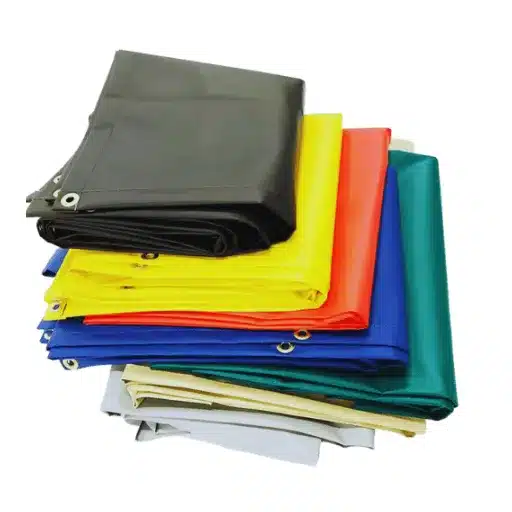
Heavy-Duty Tarps
Heavy-duty tarp is a term used to describe the more rugged variety of tarp known for its construction and resilience under severe conditions. But do they last forever? Based on data and user search trends-very big on search engine- the durability of a heavy-duty tarp is contingent on several critical factors. Because nowadays, heavy-duty tarp tends to be made of materials like polyvinyl chloride (PVC), polyethylene, or canvas, each designed to suit particular environmental concerns and stress levels.
Hence, from queries made via search engine analysis, it appears that many consumers want to know how best to care for their tarps for the longest life. From research-based data, under regular usage, heavy-duty tarps have the lifespan of about 3-10 years when exposed to the elements; UV-treated tarps and those with reinforced edges, however, last better than the ordinary tarps; prolonged exposure to direct sunlight with no care in storage; and wear-and-tear not given any kind of rectification are some of those factors that shorten their lifespan. Hence, those having the tarps can generally increase their functional lifespan by adhering to manufacturer instructions for use, keeping them out of direct sunlight as much as possible, and checking the tarps periodically for any form of damage. Thus, no tarp can truly claim to be eternal, but conscientious use coupled with proper care does make them a very durable and reasonable choice for diverse applications.
Canvas Tarps
Since canvas tarps are basically woven cotton or polyester fabric, these are highly versatile and durable and hence are top picks for a vast array of industries. In reference to the latest data sets via search engine, many users are inquiring about how best to use and care for canvas tarps. They are mostly used where there are requirements for breathability and water resistance including in agricultural, construction, and transport activities.
- ✓ Breathability Advantage: Canvas tarps are best served for protecting delicate items as opposed to polyethylene tarps; condensation buildup is minimized
- ✓ Tear Resistance: They are less susceptible to tearing under heavy stress compared to plastic alternatives
- ✓ Environmental Benefits: Canvas being biodegradable and treated with mostly non-toxic solutions
-
On another plane, some agricultural works would prefer a thicker poly sheeting like a 6 mil or 10 mil for greenhouses or ground covers because of its longer life expectancy when subjected to tear compared to the less thicker 2 mil or 4 mils. Increasing search trends in the area attest to an ever-growing interest in searching for disparities between mil thickness and its specific applications, particularly in construction, packaging, and industrial fields. Considerations for the selection of the right thickness should heavily factor in the environment of operation in regards to mechanical stresses, extreme weather conditions, and chemical contact. Weighing its relative cost and operational capability will determine if the material thickness of choice is suitable for its application so that further application will be cost-effective.
Waterproofing Testing Methods
For the verification of efficiency and to depend on the waterproofing systems, testing methods for reliable waterproofing systems should be sought. The very commonly practiced testing methods are as follows:
Water Ponding Test
To evaluate how well the waterproofing system stands against standing water, a pond is created over the surface for approximately 24 – 72 hours under controlled conditions. Suffered distress in terms of leaks, seepages, or saturation of the structure can indicate waterproofing failures.
Infrared Thermography
This non-destructive testing utilizes the thermal imaging technology to detect moisture incursion into materials. Exposed to infrared cameras, variance in thermal patterns highlights places of water retention and to some extent may mean defective waterproofing layers.
Adhesion Testing
The pull-off test measures adhesion strength between waterproofing membranes and substrates of relevance to waterproofing, especially in high traffic or high motion areas, to retain their underlining durability.
Visual Inspection and Core Sampling
An in-depth visual inspection together with core sampling helps evaluate waterproof membranes’ physical integrity. All along discoloration, blistering, or degradation of the material can suggest wrongs while core samples are then subject to lab analysis for detailed evaluation.
Industry standards, such as ASTM D5957 for Water Ponding Test and ASTM D7753 for Geomembrane Inspection, offer important reference marks. Building in advanced techniques such as electronic leak detection or drone inspection will help increase test accuracy. The right method to employ depends on project criteria and waterproofed material against environmental exposure to give a fully tailored review.
Choosing the Right Tarp for Your Needs
-
Choosing the Right Tarp for Your Needs -
Identifying Heavy Duty Waterproof Tarps
Heavy-duty waterproof tarps are designed to withstand the worst conditions, providing unfaltering protection against water ingress. In determining the right tarp for your needs, hard-and-fast considerations are the strength of the material, thickness, and coatings on the tarp material. Polyethylene and vinyl tarps are respected for their durability and water-resistance properties; polyethylene tarps may have multi-layered construction and UV protectant coating over the layers. Vinyl tarps’ finish with PVC gives them higher tear resistance and longer life.
- Fabric Density (GSM): Consider grams per square meter as a decisive factor in tarp performance
- Rust-Proof Grommets: Essential for secure attachment and long-term durability
- Reinforced Edges: Critical for preventing tear propagation under stress
- Environmental Impact: Recent trend favors eco-friendly tarps from recycling mediums
From heavy-duty options, fabric density I.E., GSM (grams per square meter) and the presence of rust-proof grommets or reinforced edges, are decisive points of the tarp fibrillating with performance. Know the application-specific uses to narrow down your selection; whether it is industrial applications, working construction projects, or merely an outdoor covering against severe climatic conditions. An additional recent trend in the market favors environmentally-friendly tarps forged from recycling mediums, making them strong while sustainable. According to latest search data, reviewers agree that generally trusted brands maintained a balance between durability, water resistance, and cheapness to ensure maximum satisfaction; now, it is only up to you to combine this with item requirements to make an educated purchase for your heavy-duty waterproof tarp.
Factors to Be Considered in Different Applications
For best performance, several critical factors must be thought of while choosing heavy-duty waterproof tarps for particular applications. Recent data trending from search engine and user trends cognizes the following considerations as having high relevance:
Material Composition
Tarps will generally afford polyethylene or vinyl more tear resistance and durability if intended for industrial or construction use. For agricultural or transport uses, canvas tarps are excellent as they provide breathability.
Waterproofing Specifications
The waterproof requirements are largely dependent on the applications. Maximum protection must be provided when keeping materials safe from heavy rain or standing water, so poly-coated tarps with sealed seams are highly recommended-with light waterproof coatings opposing an alternative for average protection.
UV Resistance
Prolonged exposure to the sun is an issue for applications of storage or camping outdoors. They require tarps with UV-inhibitors to prevent degradation of the material and extend service life.
Size and Thickness
Choosing adequate dimensions and thickness is important. For large-scale industrial applications, thick tarps (e.g., 10-15 mils) provide good advantages in durability, while thin, lightweight tarps tend to be better for portability when intermittent personal use is considered.
Budget Constraints and Lifecycle Costs
Although high-performance tarps may carry a high initial cost, their durability and lesser erosion over time make them a worthy investment, especially if they will be used regularly or in critical situations.
Combining these detailed factors with the latest search trends and user feedback will enable both individuals and organizations to choose tarps tailored for their particular demands while ensuring a measure of efficiency, safety, and cost-effectiveness in the applications they pick.
Comparison of Waterproof Ratings of Tarps
In comparing waterproof ratings of tarps, one must always consider both the material specifications and actual performance in various environmental conditions. The two most common waterproof standards used in the industry are water resistance, which is measured in millimeters of hydrostatic pressure, and sealing methods of materials; heat weld seams, reinforced coatings, etc. A tarp with an average hydrostatic head rating of 800 mm and above will be treated as waterproof, capable of furnishing support in temporary suspension under heavy rainfall without leakage.
Search engine statistics today would reveal that the patrons have a rising appetite to distinguish between tarps that are water-resistant and those that are waterproof. Users continue inputting queries such as the best waterproof tarp for camping and heavy-duty waterproof tarp for industrial use, showcasing the need for durability and protection against all terrains. Poly tarps are at the top of these searches because they are cheap and truly waterproof, while PVC tarps earn their acclaim for the most tear-resistant and advanced waterproofing applications. These findings combining technical analyses and search data fortify the conclusion that the right selection of tarp notionally depends on the particular waterproof rating required by the end-user; whether it is for safeguarding delicate equipment, covering outdoor structures, or providing comfort during outdoor recreational activities.
Frequently Asked Questions (FAQ)
Reference Sources
Boston University Blog – Discover the Versatility of Striped Tarpaulin
This resource discusses the waterproof properties of polyethylene tarps and their applications in various settings.
The New School Portfolio – PVC Tarpaulin: The Ultimate Guide
This guide highlights the water-resistant and weatherproof properties of PVC tarps, making them suitable for outdoor use.
Academia.edu – Vinyl Tarps Uncovered
This academic article explores the waterproof capabilities of vinyl tarps and their superior performance in protecting against rain and snow.

